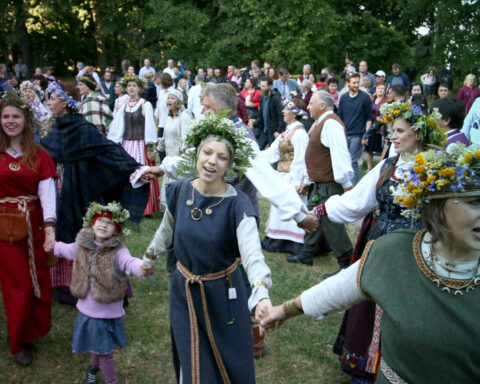Hot weather does not inspire culinary endeavors. In fact, when temperatures rise, most of us tend to stay away from the kitchen as the sheer thought of boiling pots makes us want to jump under the shower. And you think we get it bad? Think of our grandmas and great-grandmas who did not cook on electricity or gas but very often over the open fire. No wonder they’d be the first ones to think of a tasty and nutritious alternative meal for hot days.
Chłodnik? It had to be beetroots!
Lithuania and Poland share just the dish. Chłodziec litewski (in Polish) or šaltibarščiai (in Lithuanian) is a beetroot-based soup served cold. And by no means is it a simple snack. Its forms vary and can be quite elaborate. Its original versions were also richer. Each household has its own way of preparing the perfect chłodnik. A bowl of this pink delight is bound to fill your tummy with natural goodness, leaving you satisfied and ready to enjoy the rest of your day.
What goes into it? The base is prepared either from chard or boiled beetroots. The next main ingredient is soured milk (I know – it sounds impossible to some, but fermented milk comes with many benefits) or, if you can’t make any, good quality kefir. Thirdly you need some fresh dill. It is essential, as real chłodnik is characterized by a strong flavor of fresh dill. Once mixed and seasoned to taste, you garnish it with additional ingredients.
In Lithuania – you add boiled potatoes and a boiled egg. In Poland, it’s typically served with just a hardboiled egg, although the registered recipe includes potatoes. You should also add fresh cucumbers, radish, and spring onion. Some original recipes included crayfish meat. But it is precisely the history of the dish that might involuntarily heat up the atmosphere.
Šaltibarščiai‘s Heated legacy
Chłodnik/šaltibarščiai is an iconic summer dish both in Lithuania and Poland. This most likely is the result of our shared history. Chłodziec litewski appeared in the Polish lands sometime in the 14th century (during the reign of the Jagiellonian dynasty in Poland), with its origins pointing to the Sejneńszczyzna province (today’s north-east Poland, basically on the border with contemporary Lithuania.) It is also there where chłodziec litewski was entered on the traditional Polish produce list in 2006.
The earliest Lithuanian sources that mention šaltibarščiai date back to the 17th century. Some even add that it entered Lituania from Poland, which is peculiar since the Polish sources point to the Lithuanian origin of the dish. Such discrepancies are common when the history of countries and their heritage is long and, at some point, intertwined. The most important takeaway is that both Poland and Lithuania are proud of the cold borsht and serve it with their signature twist.
Famous indeed
Chłodnik is the dish to order in the summer season when visiting Poland or Lithuania. Widely popular, it caters to many tastes. A fact well known and chosen to testify to the longstanding popularity of the dish is that Adam Mickiewicz himself found the soup worthy of mentioning in his famous Epos – Pan Tadeusz. And not just once but three times! For example:
“The men took vodka; meanwhile every guest
Adam Mickiewicz, Pan Tadeusz
Sat down and ate the cold beet soup with zest.”
Stop! Fantastic. But how did they make it cold?
These days a refrigerator is a basic kitchen appliance in any household. But how did they cool down the soup in 14th, 15th, or heck, even in the 19th century? Nothing simpler. Polish sources mention that the dish was served with… crushed ice. Just please, don’t make me explain where they got the ice from in the middle of the hot summer.







